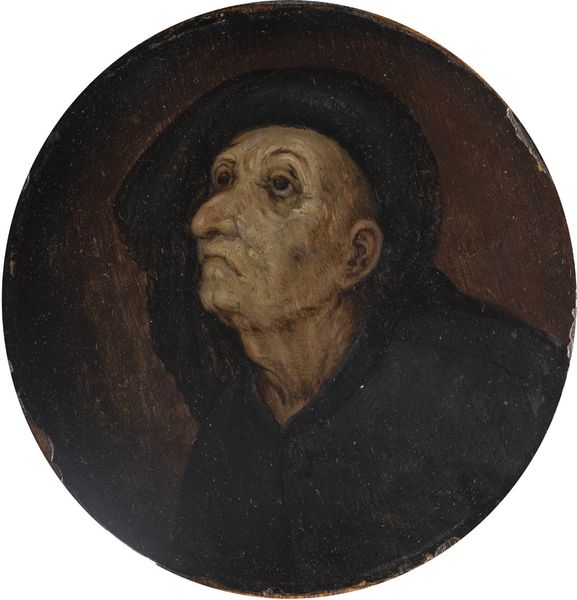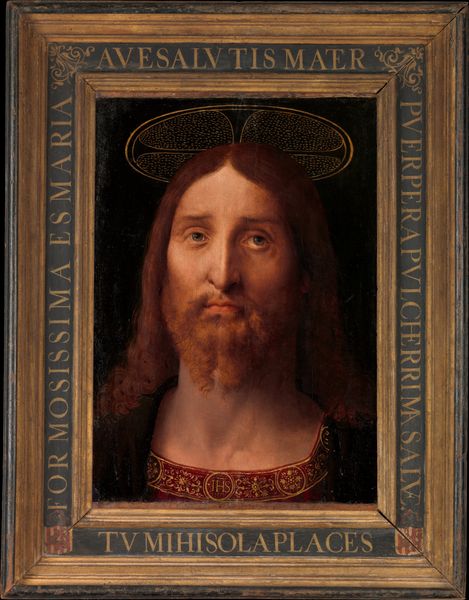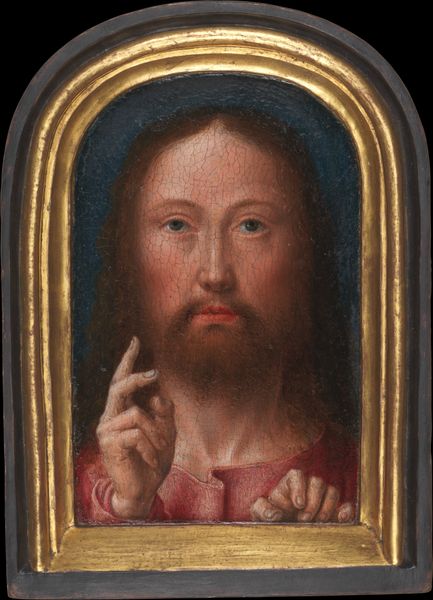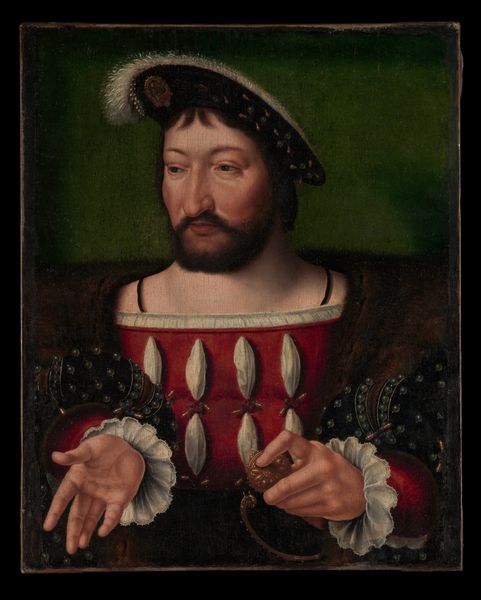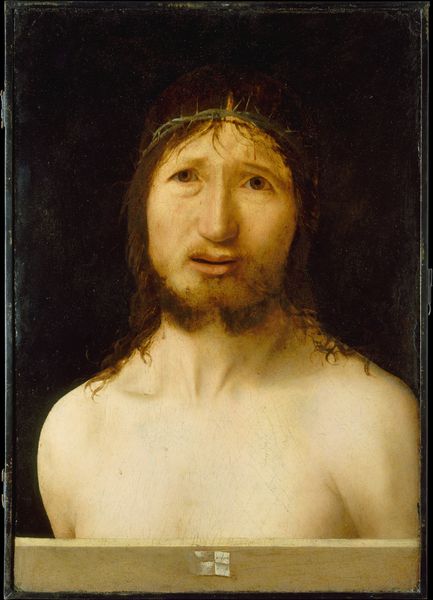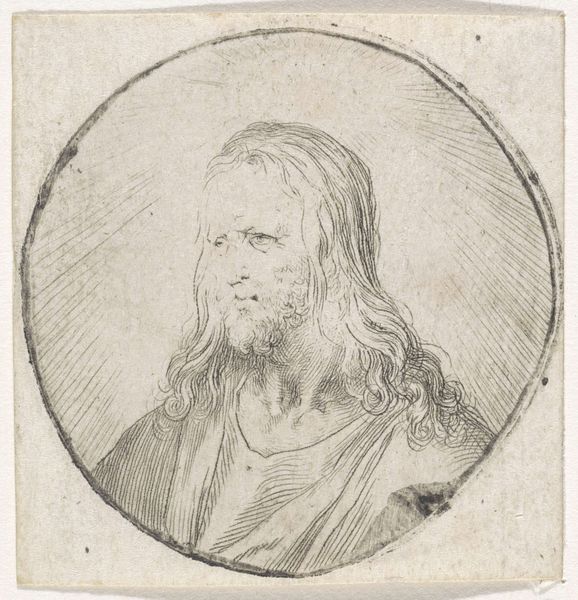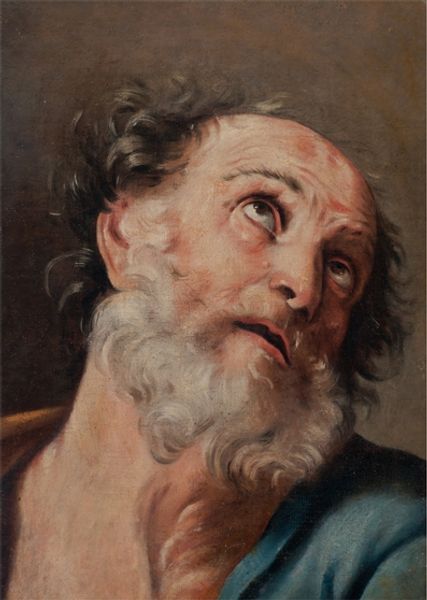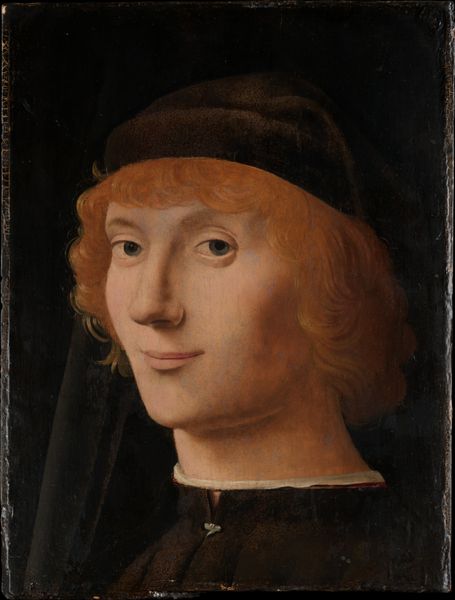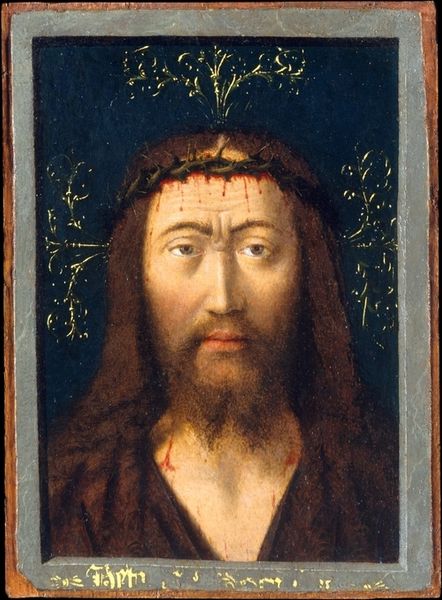
Head of Saint John the Baptist on a Charger 1495 - 1505
0:00
0:00
panel, painting, oil-paint
#
portrait
#
panel
#
self-portrait
#
portrait
#
painting
#
oil-paint
#
chiaroscuro
#
history-painting
#
academic-art
#
italian-renaissance
Dimensions: Diameter 11 1/8 in. (28.3 cm)
Copyright: Public Domain
Curator: I find myself immediately struck by the profound stillness in this image. The closed eyes, the muted palette… it exudes a sense of mournful contemplation. Editor: That’s quite astute. What we're looking at is Aelbert Bouts’ "Head of Saint John the Baptist on a Charger," made sometime between 1495 and 1505, rendered in oil paint on panel. Currently it's held in the collection of the Metropolitan Museum of Art. The starkness of the presentation, the artist's technical control—it all speaks to specific workshop practices of the period. Curator: Absolutely. And this motif, the severed head presented on a platter, it’s heavy with symbolic weight. John the Baptist, a figure of moral authority, silenced. It resonates with themes of sacrifice and the fragility of truth in the face of power. Editor: Indeed. The materials themselves offer insight here. Bouts' use of oil paint allowed him to achieve an incredible level of detail and luminosity, drawing the viewer into the raw physicality of the subject. Curator: And the contrast between the coarse texture of the hair and beard, versus the smooth skin, enhances the emotional impact, doesn't it? Editor: It certainly does. Moreover, examining the wood of the panel, we could deduce something of the resources available to Bouts. The preparation of the surface, the layering of the paint… all indicative of the artist’s workshop and its capabilities. Was this commissioned work? Speculative? These questions matter. Curator: I concur. It would illuminate the context and the potential audience reception at the time. And beyond its literal depiction, it operates on a psychological level. It compels one to reflect on mortality, justice, and the consequences of conviction. Editor: Precisely. Ultimately, what we observe in Bouts’ work are decisions—conscious manipulations of material and method in order to communicate a specific message. It's through those details that we grasp the fullness of the artist's intent and its impact on us, centuries later. Curator: Indeed, understanding the historical and symbolic echoes enhances its emotional power. Editor: Yes, this really showcases how interrogating process reveals so much.
Comments
No comments
Be the first to comment and join the conversation on the ultimate creative platform.
